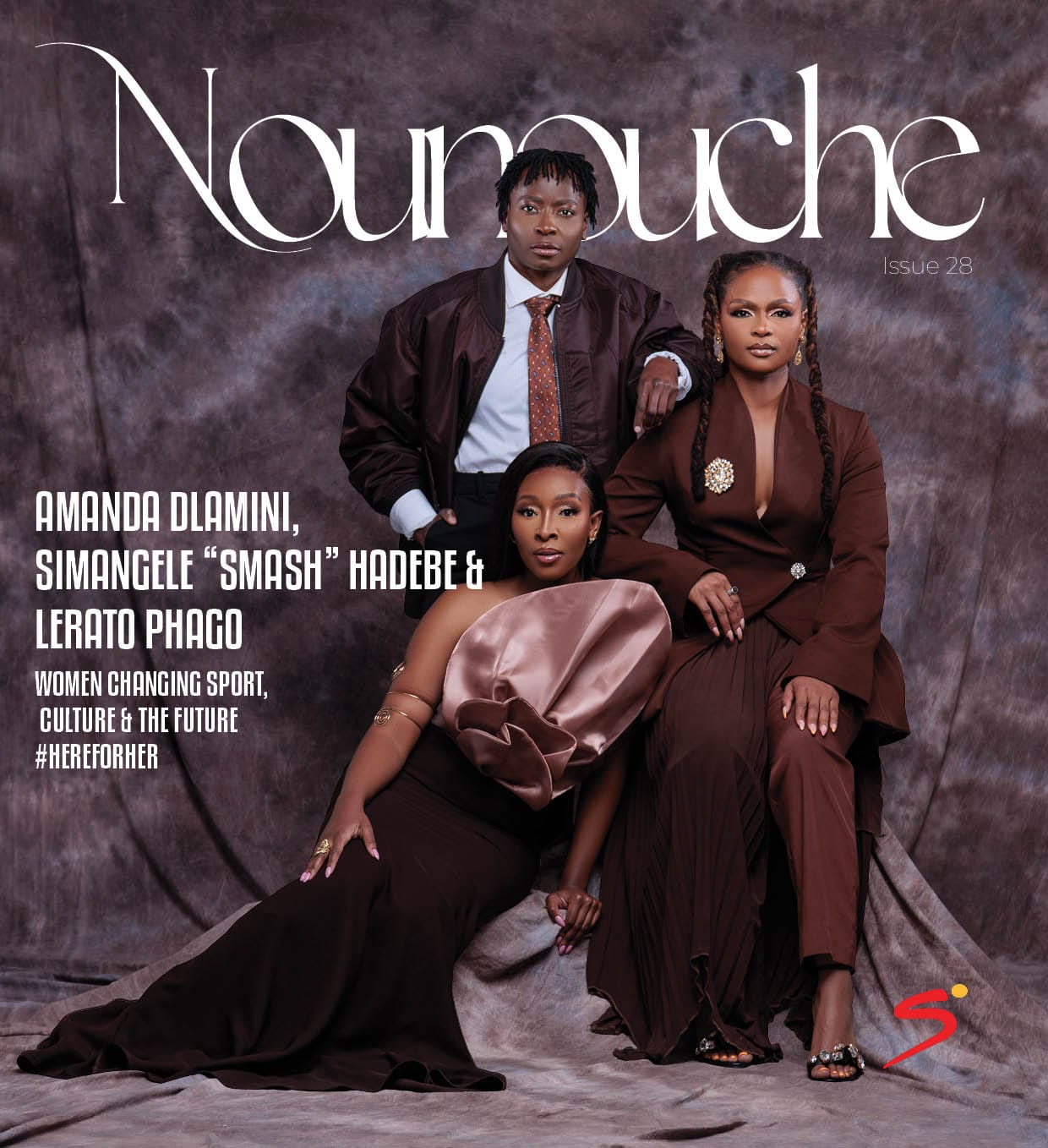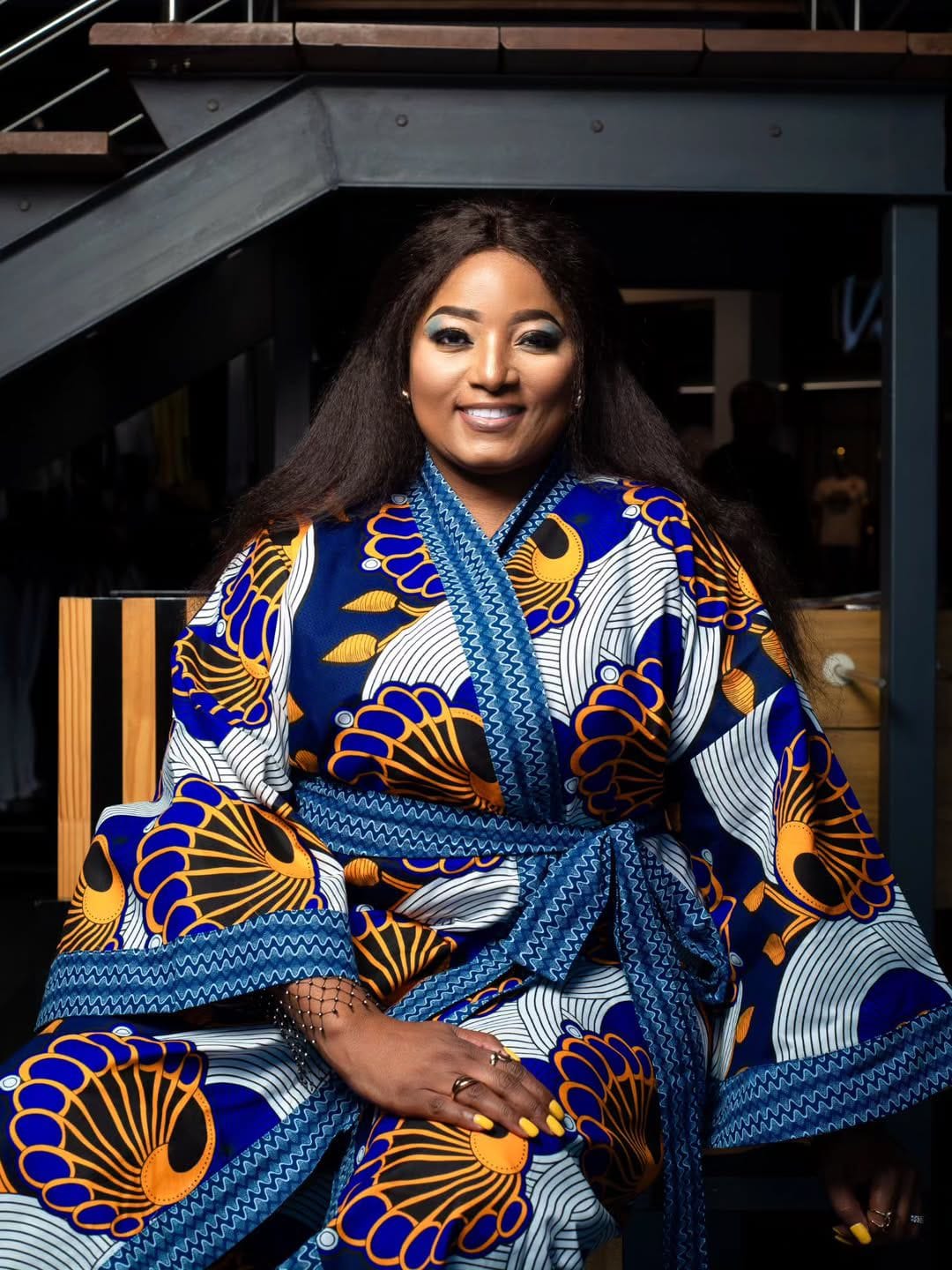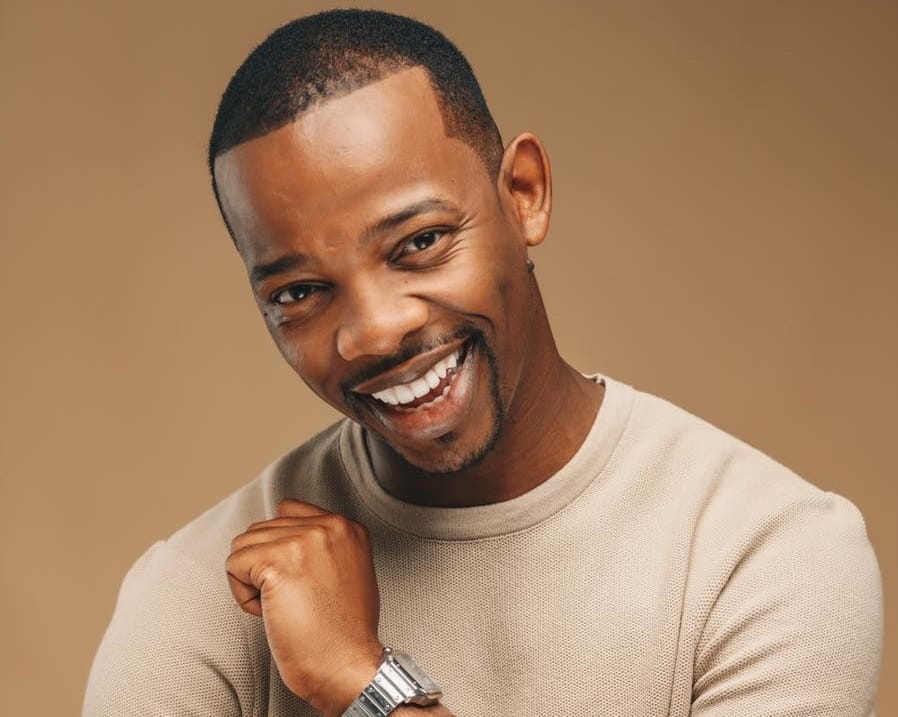Glow, Grit, & Sisterhood: Soft Power with Amanda Dlamini, Simangele “Smash” Hadebe & Lerato Phago
On Thursday, 7 August, the studio, by mid-morning, felt like warm velvet. Sunlight spilled through the blinds, dust motes danced in the air, and R&B and soul rolled out of the speakers in slow, syrupy waves. People softened at the edges, makeup brushes moved slower, conversations lingered longer, shoulders loosened.
By nightfall, the soundtrack had shifted. Amapiano basslines pulsed through the floor, three-step rhythms coaxed quiet head nods from the crew, and the air had that late-shoot electricity where tiredness meets adrenaline. It was the first-ever Nounouche × SuperSport cover for Women’s Month, stamped with #HereForHer and fronted by three women wearing it like it was made for them, because in more ways than one, it was. The perfect way to celebrate women’s month as the broadcaster celebrates 30 years in the game.
Two Looks, One Truth
We gave them two looks because that’s their reality. The formal fit had boardroom bite – sharp lines, clean confidence, the kind of polish that walks into a room and resets the temperature without raising its voice. The laid-back look was pure honesty, sport-luxe ease, off-duty cool, the “I know who I am” energy you can’t fake.
Watching them switch from one to the other never felt like costume changes. It felt like code-switching – not in the performative sense, but as language. Fashion speaking fluently.

The Women Behind the Frames
Simangele “Smash” Hadebe isn’t just a name you hear in boxing circles – she’s the name. The reigning South African women’s flyweight champion has built a career on clean footwork, sharp jabs, and an unshakable refusal to be underestimated. She grew up in Kwa-Thema, Springs, finding her way into a boxing gym at a time when girls weren’t expected to lace up gloves. Boxing became more than a sport; it was a language for survival. Her induction as the first honouree of SuperSport’s second cohort of Real World Champions, an initiative that celebrates ordinary South African doing extraordinary things across various sporting codes, is a no brainer.
When we sat down, Smash’s hands rested loosely in her lap, but her words landed with the weight of someone who’s fought for every inch of ground she stands on.

“I found my voice in boxing,” she said. “Round by round, I learned to speak up. This sport became how I address what I survived. It’s not just punches; it’s power to say the things I couldn’t say when I was younger.”
The room stilled for a beat, as if even the speakers were listening. In that stillness, you could feel the other truth she was naming: the right to be soft after you’ve fought to be safe.
Lerato Phago leaned in like a friend telling you a secret at a party. A sports broadcaster and storyteller, she’s one of the emerging voices shaping how women’s sport is narrated in South Africa. To her, commentary isn’t just filling silence between plays, it’s weaving the context that makes a moment matter.
“I’m a storyteller more than anything,” she said. “Sport connects people through the storylines – why we show up, who we become under pressure, the communities that hold us. The score is a chapter; the story is the book.”
She wasn’t performing insight; she was unpacking it. And there was softness in that too, the refusal to rush past the human parts.

Then there’s Amanda Dlamini – the former captain of Banyana Banyana, a midfielder with vision sharper than any camera lens, and now a football analyst who’s made the often male-dominated pundit’s desk feel just a little more human. Amanda played over 100 international games for South Africa, led her team at the 2012 London Olympics, and has become a voice for gender equity in sport.
She started with a small smile, the kind that reads like both an introduction and a punctuation mark.
“For the longest time, I was always moving to the next goal,” she said. “Now I’m teaching myself to pause, to acknowledge what I’ve done, and to recognise the work it took to get here. Naming your wins is part of growing.”
It landed like advice and permission in one breath, ambition with room to exhale.
Legacy as a Practice
We talked about legacy, not as a headline, but as something you do in the dark, when nobody’s filming. They all said versions of the same truth: yes, they’ve broken barriers, but they also had people who cleared paths before them. And now, that’s the assignment, to widen the road for the girls coming up next.
Use the platform. Make the calls. Share the contacts. Hire the next one. Put women everywhere in the ecosystem, on camera and behind it, in edit bays and control rooms, as managers, writers, producers, decision-makers. Not just featured but resourced. Not just present but paid.

The Energy That Stays
By the time we wrapped, the air smelled like hairspray and possibility. The crew swayed between takes, cameras clicking in rhythm with the music. The final frames had that afterglow only good energy leaves behind. This cover isn’t just pretty — it’s proof.
Proof that Women’s Month can be more than a caption. Proof that #HereForHer is a structure, not a slogan – a commitment and not just a campaign. Proof that soft power, glow, grit, and a little two-step can move a culture forward.
If you ask me what stays with me, it’s this: Smash speaking power into old silence, Lerato reminding us that the story is the bridge and Amanda giving herself the credit she’s earned and inviting the rest of us to do the same.
And maybe that’s what Women’s Month should always be, not just a photo on a cover, but a room full of women who know the fight, who’ve earned the glow, and who keep the door wide open behind them.






No Comments